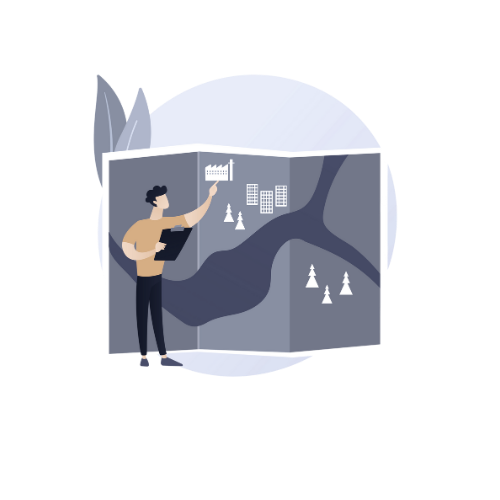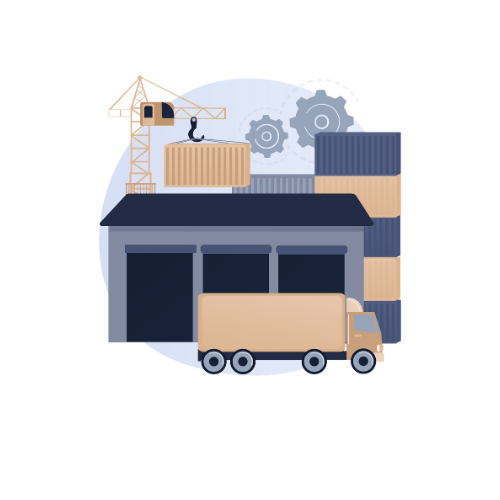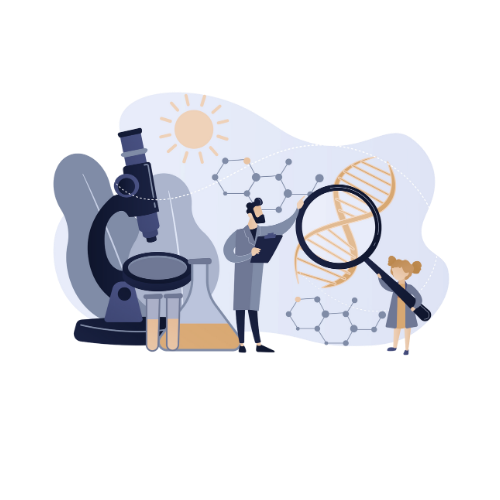Software application areas
Our solutions adapt to a wide range of industries through advanced customization of alert templates, audit checklists, and operational workflows, enabling each organization to structure its own field-ready methods.
Explore below the different application sectors and their use cases to discover the full potential of our tools.

Empower your local authority with accurate, actionable field data to better understand, manage, and operate your territory—both in day-to-day situations and during crises.
Qriska software used:

Use cases :

• Daily management of municipal services
Technicians (roads, lighting, waste, buildings) report and track incidents in real time with photos and geolocation.
Result: faster interventions, improved coordination, and a clearer view of the territory.
• Panic buttons for schools and public facilities
Schools and reception staff use a discreet, geolocated panic button to alert in case of danger.
A quicker, safer response in the event of an incident or threat.
• Citizen participation during crises
The authority temporarily opens Qriska to residents so they can report damage, hazards, or assistance needs.
A massive, reliable, and prioritized flow of information—critical when every minute matters.
• Territorial monitoring for Climate Plans and environmental initiatives
Qriska structures the collection of indicators (pollution, drought, risks, land use) and tracks territorial evolution.
A decision-support tool to adapt planning and improve resilience to climate change.

Give your NGO the tools to better analyze, monitor, and demonstrate the impact of your actions through reliable, participatory field information directly usable in your logical frameworks.
Qriska software used :

Use cases :

• Indicator tracking for logical frameworks and accountability
Field teams regularly collect key project indicators (water access, attendance, stock levels), automatically consolidated for donor reports.
Result: easier, transparent accountability and more accurate program management.
• Needs assessment and participatory mapping
During initial diagnostics, Qriska Alert maps infrastructures, issues, and vulnerabilities to build a clear understanding of real needs.
A solid analytical basis for designing relevant, context-adapted interventions.
• Participatory workshops with local communities
Teams engage the population to report priorities, risks, or resources through the app or during group workshops.
Better project ownership, interventions aligned with local expectations, and stronger acceptance.
• Operational monitoring of field teams
Field agents can report incidents, progress, or challenges in real time, with photos and geolocation.
Improved coordination, clearer progress tracking, and enhanced responsiveness to unforeseen events.

Give your transportation teams the ability to track, secure, and optimize their operations with reliable, real-time, geolocated field information.
Qriska software used :

Use cases :

• Container tracking and management
Logistics operators locate, inspect, and report container status directly in the field (shocks, damage, obstructions, availability).
Result: continuous traceability, fewer losses, and smoother port and logistics operations.
• Incident reporting by truck drivers
Drivers instantly report breakdowns, accidents, delays, damages, or road obstacles, with photos and geolocation.
Greater reactivity, optimized route management, and enhanced driver safety.
• Fleet monitoring and operational optimization
Operations teams view real-time fleet status (vehicles, trailers, equipment) and reported anomalies.
More proactive maintenance, better asset availability, and reduced downtime.
• Field team safety
Drivers and operators use an alert button in case of assault, accident, or dangerous situation.
Faster assistance and enhanced protection for isolated personnel.

Equip your laboratory with digital tools to strengthen quality, compliance, and operational efficiency across audits and processes—from the field to the final report.
Qriska software used :


Use cases :

• Quality and regulatory compliance audits
Field teams perform internal or external audits of facilities, equipment, and laboratory procedures using customized checklists, with mobile entry, photos, history, and automated reports.
Result: optimized traceability, fewer non-conformities, and easily exploitable documentation.
• Facilities and equipment inspections
Quality or maintenance managers identify and track non-conformities (e.g., ventilation, cleanliness, calibration) through integrated deviation lists.
Result: faster interventions, better inter-department coordination, and continuous improvement of laboratory conditions.
• Automated reports and corrective action plans
Based on completed audits, generate professional reports and corrective action lists assigned to responsible staff, with progress tracking.
Result: improved visibility, stronger accountability, and simplified communication.
Use cases :

• Modeling and automation of analytical processes
Create no-code custom workflows (sections, calculations, logical validations) for analytical protocols, sampling, or laboratory tests.
Result: easy adaptation to new standards and full digitalization of processes.
• Offline data collection with real-time checks
Technicians record measurements, images, and field data even offline; the app automatically validates data consistency and flags anomalies.
Result: fewer errors, no double entry, and significant time savings.
• Automatic calculations and ready-to-send reports
Integrated calculations and logical checks generate reports in seconds, including results, photos, and comments.
Result: faster sharing with stakeholders, better responsiveness, and enhanced professionalism.
• Campaign monitoring and centralized management
Managers access dashboards for tracking studies, report versions, detected anomalies, and historical data.
Result: improved visibility, simplified strategic management, and a structured repository of studies.
